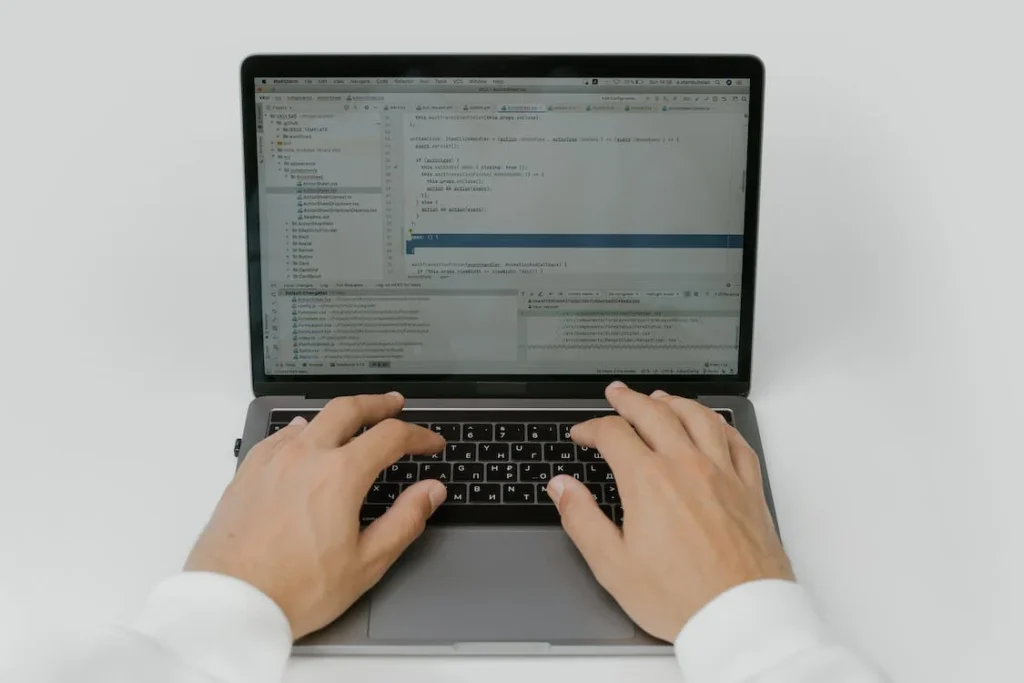Article by Pulkit Arora. Edited by Richaa Mukhopadhyay
Guess what distinguishes Apple from Samsung?
It’s not their products that are the differentiating factor, but their brand.
A brand is built up of several constituents such as the name, logo etc. And, trademark is what protects the brand name which helps your products/ services distinguish themselves from the others.
Trademarks are very essential tools because it allows companies to protect their product’s reputation.
Trademarks are part of IPR (Intellectual property right).
In this article, I shall discuss about the registration process of the trademark and also the advantages to register the trademark. Trademarks convey to us valuable information about the source and distinct product characteristics.
Trademarks are also effective advertising tools and the grounds for market competition. The trademarks identify with price, health and even a sense of belonging in the minds of consumers for the goods. Trademark is a legally protected under the Indian Trademark Act 1999 and it provides various remedies in case of infringement of right.
- Interesting Read: How You Can Get Funding For Your Startup in India
What is a Trademark?
Any words, letters, numerals, sketches, pictures, shapes, colors, logos, marks or variations used to differentiate products or services can be known as a trade mark.

Trademarks are, in general, words, names, marks, devices, designs or other distinguishing indications or markings used to classify the supplier of products or services and to differentiate them from those produced by others. Statutory recognition has been granted to the definition of trademarks in Indian law under Section 2(b) of the Trademarks Act, 1999.
A trademark does not necessarily reveal the identity of the creator, but if customers know that all products or services sold under a certain trademark come from a single entity or from another licensed by the specific entity, then such mark does serve as a trademark.
Trademarks also represent the goodwill that an organization has created for a product or service and provide security for the company’s interest in that goodwill.
In fact, trademarks play a significant role as advertising resources for their owners. They benefit buyers because buyers can develop trust over products from a particular brand. Trademarks are special privileges which are bestowed on the holders.
Consequently, the use of trademarks by someone without authorization on identical products or services is unfair because such use is an infringement of the owner’s rights.
Trademark rights are territorial in nature. Every nation has its own laws and registration rules. In fact, while there are certain differences in the rules, securing trademark rights in one country does not always afford protection to the trademark in other countries.
In certain countries, such as the USA, trademark rights are almost entirely subject to regulation, but protection can be secured without the use of the mark.
However, failure to use can result in the cancellation of registration in the majority of states.
Essential Features of a Trademark
The trade mark is a visual sign used in reference to certain products or services to signify some sort of trading association between the goods or services and the individual using the trade mark.

In order to put it into the framework of the regulatory definition, the trademark has to comply with the following criteria-
- This must be a sign that is a device, a logo, a heading, a stamp, a ticket, a name or an abbreviation of the name, the title, the phrase, the letter or the numeral shape of the goods, the packaging or combination of colors, or other combination thereof.
- It should be capable of being graphically portrayed.
- It must be able to differentiate between the goods or services of one person and those of others.
- This must be used or planned to be used in accordance with goods or services.
- The use must be of printed or other visual representation of the symbol.
- In the case of services, there may be the use of the logo or the reliability or performance of the services.
- The usage shall be for the purpose of showing the link in the course of exchange between the goods or services and, as the case may be, any person who has the right to use the mark either as owner or as registered recipient. It is not important for the person using the mark to disclose his identity.
Significance of Having Trademark Protection for Your Brand
The importance of the trademark shall be the reference to the customer as to the nature of the production or the quality of the products.
- It assures the purchaser a reasonable guarantee of the trademark and the standard of the article he purchases.
- A trademark is not only used to imply that the products are of a specific manufacturer, but the products of that maker are of a certain value or quality.
In fact, this video shows what happens when your trademark is left unprotected-
Following types of trademarks can be registered under Indian trademark Act, 1999.
- Product trademarks: are those that are affixed to the identity of products.
- Service trademarks: are used to distinguish an entity’s services, such as a trademark for a radio company, a supermarket store, etc. They are used for marketing services.
- Collective trademark:Registered in name of individuals, organizations or other organizations.
- Word mark: A word mark applies to the right of the holder only on the words, letter etc. but have no right on the way it operates.
- Sound trademarks: Therefore, a sound trademark, a trademark, is a sound or melody with a distinctive impact of recognition. To be able to preserve it, for example, using words, the sound must be reproducible graphically. A well-known sound trademark is the Yahoo Yodel for Yahoo Inc. that was India’s first sound trademark in August 2008.Example The “Roar of the Lion” sound has been registered by the MGM Pictures, Britannia Biscuit, Ting Ting Ti Ting.
- 3-dimension (3D) trademarks: In India, the concept of a trademark includes the form of a goods and accordingly, two-dimensional or three-dimensional or 3D marks may be registered under the provisions of the Act.
- Shapes and packaging– In India, the concept of the trade mark includes shaping or packaging as long as it is able to be portrayed graphically and it able to differentiate between products and services from one person to another. Example: – Shape of the Coco Cola bottle called the contour bottle.
- Color trademark – Section 10 of the Act specifies that a trademark can be limited to a given color or color combinations. However, such a color restriction will only be allowed when assessing the mark’s distinctive character. Example: – Coco-cola, Fanta and Fruit juice drink.
Trademark Law Internationally, as Applicable in India
#1. Paris Convention
This Convention down the groundwork of trademark law internationally and was signed in Paris on March- 20- 1883.
Main Features of the Paris Convention
- It applies to company property in the broadest sense, including patents, trademarks, product designs, service models, trade names, geographical indications that restrict unfair competition.
- It provides for National Treatment: Contracting State shall give nationals of other Contracting States the same immunity as it grants its own nationals.
- When a first application is lodged in one of the Contracting States, the applicant may apply for immunity in any of the other Contracting States within a certain period of time; this will then be treated as having been filed on the same day as the first application.
- India became signatory of the Paris convention on 7 –December-1998.
#2. Trade Related Aspects of Intellectual Property Rights (TRIPS)
Main Features of TRIPS
- The Agreement on Trade Related Aspects of Intellectual Property Rights (TRIPS) and it came into effect on 1 Jan. 1995.
- Minimum standards of protection – Subject-Matter protection, Legitimate exceptions to the privileges conferred, Minimum duration of protection.
- Enforcement–
- Deals with domestic procedures,
- Enforcement remedies.
- General principles apply to IPR.
- Provision on civil and administration procedure.
- Special clause related to border issue and criminal procedure.
- Dispute settlement
The Agreement makes disputes between WTO members over compliance with the TRIPS obligations subject to WTO dispute resolution procedures.
#2. Madrid Protocol
Main features of the Madrid Protocol:
- It was adopted in 1989.
- Any State party to the Paris Convention could become a party, to the Madrid Agreement or the Madrid Protocol or both.
- Offers the possibility for trademark owners to secure trademark rights in many countries by filing one application with the national or regional trademark office.
Related: Read More about the Madrid Protocol.
Who Can Apply for Trademark Protection?

Any individual who wishes to use a trade mark or have it used by third parties may apply for registration.
It may be a person, or a legal entity. Some countries’ laws stipulate that the applicant must engage in a commercial service involving the products for which he is seeking mark protection.
It is important to remember that Article 2 of the Paris Convention stipulates that a country must care for all other member of countries as it cares for its own member.
Therefore, Member States are not authorized to discriminate against foreigners as compared to their own nationals.
Registration Requirements for Trademark Protection
- A trademark helps differentiate between the products or services of individuals for which it is registered or proposed to be registered.
- The application form has to be completed with the name, address, nationality and in case of a company, it should mention the state where it was incorporated.
- The sign filed for registration must show in the application form. If the sign is not a normal word from everyday languages, it must give a representation of it (and need to add one or more specimens). If the sign is to be registered in colors, then colors must be claimed and a colored specimen or the color(s) definition must be shown.
- The applicant has to specify the products for sign is to be registered. In general, trademark laws allow for a description of products for registration purposes.
- Date of first use of the trademark in India, if used by you prior to applying.
- Power of attorney to be signed by the applicant.
- Finally, one or more fees for registration of the trademark has to be paid.
Procedure to Register a Trademark in India
Step 1- Trademark search
Many entrepreneurs fail to understand the value of a trademark research. Keeping in mind a specific brand name is not a sufficient excuse enough to avoid a search for a trademark.
This search is meant to test whether your company name or logo is identical to other trademarks already registered and this gives you a clear picture of where your trademark stands, and it even gives you a forewarning of the trademark litigation possibilities.
There are two types of research online and offline. It’s suggested you do any of the searches. Once you have found yourself unique you can proceed to the next stage. It takes time around 4 hour and it costs you around 0 to 500 rupees.
The Ministry of Commerce and Industry provides a public search for trademarks.
Step 2- Filing Trademark Application
There are some documents involved in this. You can check the documents out in this webpage.
The trademark solicitor must draft a trade mark application based on the results of the search, provided that your company name / logo has been found to be distinctive.
The first step is to file a trademark application form at the Trademark Office, India. The Indian trademark offices are located at Chennai, Delhi, Mumbai and Kolkata.
However, we recommend that you file it online as it is cheaper that way. You need Form TM-A to file your trademark.
Apart from the form, you need to provide details about your business, such as whether it is a company or a partnership.
Related Reads:
- How You Can Register a Limited Liability Partnership in India
- How You Can Start a Private Limited or One Person Company in India
If you have a company, you need to provide the identity proof of the directors and the address of the company.
After the application has been received, an official receipt for future reference shall be given immediately. It takes around 2 to 3 days of time.
Step 3- Trademark Examination
After a trademark application is filed, any inconsistencies are reviewed by the examiner. The exam could take about 12-18 months to complete. The examiner can fully or conditionally accept the trademark. The trademark shall be published in Trademark Journal if approved unconditionally.
Charges: Government fees is Rs 4,500/- in case of Individual/ Startup/ Small Enterprise (it would be 9,000/- in all other cases) and trademark attorney professional fees is Rs. 3500/- per application per class.
Step 4- Trademark Publication
The publication stage shall be integrated into the registration procedure so that any person who objects to the registration of the mark can object to the same. If no opposition is lodged after 3-4 months of publication, the trademark shall proceed for registration.
In case of opposition; a fair hearing is held and the Registrar gives the decision.
Step 5- Registration Certificate
Regarding publication in Trademark Journal, once the application proceeds for trademark registration, a registration certificate is issued under the seal of the Trademark Office.
Step 6- Trade Renewal
After every 10 years the trademark can be continuously renewed. Therefore, the registration of your logo or brand name will be secured forever probably.
- Register your trademark and Secure your goodwill by registering your mark with Trademarks registry. (Govt. Of India, Ministry of Industry & Commerce).
Types of Applications for Registration of Trademarks in India

Section 18 of the Trademark Act provides for trademark registration in India in the following categories: –
- Ordinary trademark application – Application filed for a single goods and services class (FORM-T 1)
- Multi-class trademark application – Application for more than on goods and services. (FORM – T 51)
- Convention/priority trademark application- Application for trademark registration seeking preference from Convention country.
- Section 154 of the Act contains a special clause relating to the application for registration by residents of convention countries.
Rights of the Trademark Holder
Under Section 28 of the Trademark Act, when the registration of a trademark is valid, the licensed proprietor of the trade mark shall have the exclusive right to use the trade mark in connection with the products or services for which the trade mark is registered and to seek relief in respect of the violation of the trade mark in the manner provided for in this Act.
Why is a Trademark Important for Your Business?
Trademarks are also used as a protection for customers. When businesses are accountable for any goods or services that bear their name, they appear to take greater pride in goods.
Trademarks protect companies and customers alike and make them an intrinsic part of running a successful company. If it is structured and managed properly, it helps the company thrive in so many ways. Trademarks are most effective because they help protect the brand image with which the customers of a business are directly connected.
The effect of a trademark will help businesses in building goodwill and a brand image with its customers. Gigantic corporation like Coca-Cola, Siemens, Apple protect their business by means of trademark.
- Trademark will be a valuable asset for your company and will add to the goodwill generated.
- In the case of registered trademarks, you can deter others from using your trademarked business name / logo etc.
- Trademark can be regarded like any other type of asset such as real estate, because it can be sold, licensed or assigned
- It ensures the identity of the origin of goods and services.
- It stimulates further procurement.
- It acts as a loyalty and recognition badge.
- It could allow consumers to make a statement about life style or fashion.
Advantages of Registering a Trademark
Global exclusivity: The proprietor of a trade mark has an exclusive right to use the trade mark commercially anywhere in the state where permission has been obtained.
On the other hand. Unregistered trademark rights, could be limited to the part of the country in which the trademark is currently in use and has gained a reputation through such use.
Easier to enforce: The registration of a trade mark usually presumes that you are the owner of the trade mark and you have the right to prohibit anyone from using the trade mark. This mitigates the burden of proof in legal proceedings; that is, you do not have to assert that the trademark is legitimate, because you are its owner, or that the trade mark has goodwill.
Valuable assets: It is simple to sell or license a registered trade mark, and generally at a higher price. Additionally, registration makes it easier to use a trademark in a franchise or merchandising deal.
Funds: On occasion, a registered trade mark with a high reputation may also be used to secure funding or a mortgage from financial agencies that are constantly aware of the value of trademarks for business success.
Quality Justification: A significant objective underlying trade mark law is to protect the investments made by the trademark owner in the quality of the mark and the quality of the products or services defined by the mark.
Advertising factor: Since the trademarked logo or name creates the brand image in the mind of the customers, it is extremely valuable for advertising.
The trade mark owner succeeds in creating a favorable image for the trade mark in the market place, the mark itself can become a significant factor in stimulating sales. The ability of a mark to generate goodwill through advertising has also gained recognition under the law of trademark.
Legal Remedies in case of Trademark Infringement

This legislation complies with the TRIPs Agreement and provides an essential provision that can be used by proprietors of trade marks to prevent infringement.
Trademark Act 1999 provides wider protection for ‘well-known’ marks than was available under the previous Act, and the extent of the violation has increased. Under the Trademark Act, there are both civil and criminal remedies available to take action against a trademark violation.
Unlike China, however, there are no administrative solutions available for enforcing trademarks in India at present. Therefore, IP holders must either contact civil courts to file claims for trademark infringements or pass off / or approach a magistrate court to file criminal complaint.
Two Types of Remedies in case of Trademark Infringement
#1. Civil Remedy
Section 29 of the India Trademark Act, 1999 provides legal remedies in case of violation of the trademark. The following things are said to be infringed –
- When the registered trademark is used in relation to the same or related products or services, which is identical with or deceptively related to other registered product.
- If the use of the equivalent / similar mark for specific products or services is likely to take undue advantage of, or be harmful to, the prestige of the registered mark in India, create confusion on the part of the public or are likely to identify with, the registered mark;
- Where the registered mark refers to a material intended to be used for the marking or packaging of products as a business paper or for the advertisement of goods or services, given that such person has not been properly allowed to do so by the proprietor of the mark.
- If the distinctive feature of a registered trademark consists of words, and, another mark causes customer confusion if spoken or visually depicted.
CIVIL PROCEEDING
A complaint may be filed either under the/ laws of passing off or for infringement under The Trade Marks Act, 1999.
Depending on whether the trademark is registered, pending registration or unregistered. According to law of limitation, we can file a suit within a duration of three years.
Remedies in case of Trademark Infringement Proceedings And / or Passing Off.
- Complaint (statement of claim) with prayer for permanent injunction.
- Request to issue a temporary injunction against the infringer.
- Application for designation of court recipient / commissioner to search and seize the unauthorized goods.
- The lawsuit contains provisions for accounts to assess the income or losses made.
- Plaint contains prayer for costs.
- Evidence in the form of records of registration etc, on which the Plaintiff relies in support of his argument.
| Infringement | Passing-off |
| Statutory remedy | Common law remedy |
| In order to determine an infringement with regard to a registered trademark, it is necessary to ensure that the registered trademark is identical or disappointingly determine that the infringing mark is identical or deceptively similar to the registered mark and no further proof is required | In the case of a passing off action, proving that the sign is identical or deceptively similar alone is not adequate. Use of the symbol is likely to create confusion or deceive. |
| The defendant’s use of the mark shall not automatically cause the plaintiff any damages. | It must be proven that the defendant’s use of the trademark is likely to cause harm or damage to the goodwill of the plaintiff. |
#2. Criminal Remedies
Offences under the Indian Penal Code are classified under 2 heading:
- Cognizable (serious offences)
- Non-cognizable (not serious offences)
The key distinction between the two types of offences is that in the case of non-cognizable crimes, the sentence is less than three years and no arrest is rendered by the police without a warrant when the raids take place.
Cognizable crimes are more severe offenses requiring strict sentences and punishments, wherein the police can arrest without a warrant.
The offences under the Trade Marks Act are cognizable offences.
So, the police can not only seize the illegal items at the time of the arrests, but they may also detain the accused. Intellectual Property offences are often apparent and the arrest of the accused is usually followed by raids conducted by the concerned authorities.
Read Next:
- All About Copyright Law for Your Business
- An In-depth Guide on Professional Tax in India
- All About Powers of Attorney and Why You Need Them
- How You Can Register Patents in India: The Definitive Edition
For any queries or help with your startup, feel free to book a free consultation with us. You may also check out our list of services if you need any help with your business efforts.
Author Bio – Pulkit Arora is pursuing B.A LLB (Hons.) from Institute of Law, Nirma University. Connect with him on LinkedIn.
Editor Bio – Richaa Mukhopadhyay is pursuing B.A.LLB (Hons) from Amity Law School, Amity University Kolkata. Connect with her on LinkedIn.





















